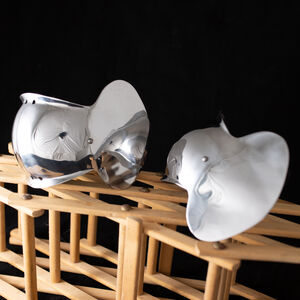
Medieval Armor
Medieval Armor suits


Female Full Armor “Evening Star”
Spring steel armour set for women

Female Armor Suit “Morning Star”
Spring steel armour set for women

Female Armor Suit “Dark Star”
Blackened Spring Steel Armor

Knight Armor Kit “Paladin”
Medieval stainless steel armour, 15th c.

Armor Kit “The King's Guard”
Churburg castle #13 harness
Medieval Breastplates, Cuirasses, Brigandines
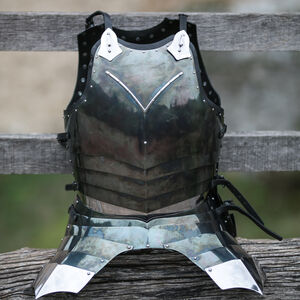
Cuirass “Dark Wolf”
Steel breastplate and backplate armor

Cuirass "Dark Star"
Blackened Spring Steel Breastplate
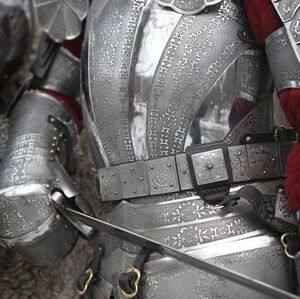
Medieval Cuirass “Paladin”
Medieval knight cuirass armor, 15th c.

Brigandine “Knight of Fortune”
Leather-covered combat body armor
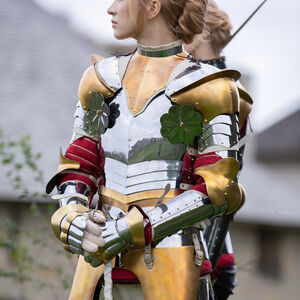
Cuirass and Tassets “Morning Star”
Female Spring Steel and Brass Armor
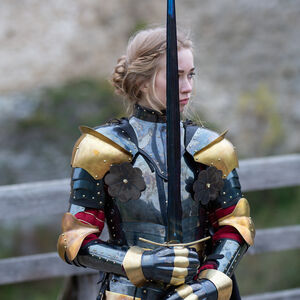
Cuirass and Tassets “Evening Star”
Female spring steel body armor
Medieval Helmets, Knight Helmets, Viking Helmets
You will find bascinets, armets, Viking helmets, sugarloafs, tophelms, turbans and a lot more in this section.

Medieval Helm “The Wayward Knight”
Blackened klappvisor bascinet circa XIV

Armor Helmet “Knight of Fortune”
Italian bascinet helm with 2 visors
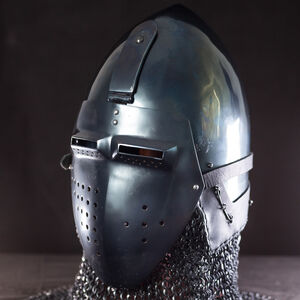
Sitten bascinet klappvisor helmet
Spring steel 14th c. German bascinet

Knight Helmet Sitten Bascinet
German klappvisor bascinet, 14th c.

Blackened Italian Bascinet Helmet
Spring steel bascinet helm for WMA
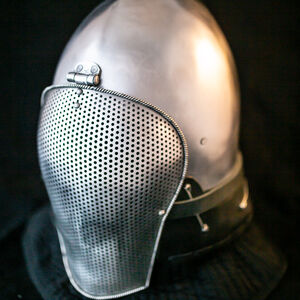
WMA Italian Bascinet with Longface
Spring steel bascinet, perforated visor
Medieval Pauldrons

Etched Pauldrons “Mythical Beasts”
Medieval spaulders with etched rondel

Knight Pauldrons “Dark Wolf”
Spring steel medieval knight spaulders

Knight Pauldrons “King's Guard”
Lombardy medieval spaulder, late 14th c.

Gorget and Arms “Dark Star”
Fantasy Knight Gorget, Arms, Pauldrons
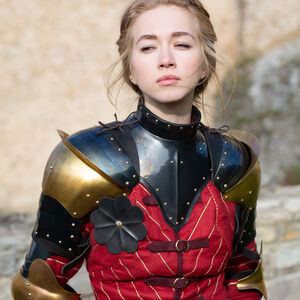
Pauldrons Armor “Evening Star”
Black and gold spring steel spaulders

Knight Pauldrons “Morning Star”
Female Knight Armor Spaulders
Medieval Arm armour
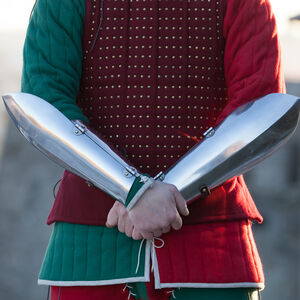
Medieval Long Bracers Bazuband
Boat-shaped forearm armour bracers
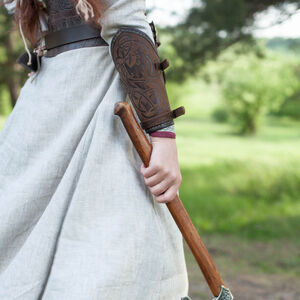
Viking Bracers “Shieldmaiden”
Tooled leather bracers
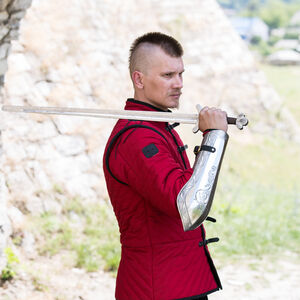
Medieval Bracers Bazubands
SCA etched armor bracers
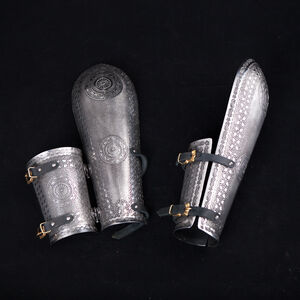
Medieval Rus Bracers Bazubands
Early Slavic arm armour, 12-13th cc.

Bazubands “Prince of the East”
Eastern style fighting etched bracers

Gorget and Arms “Dark Star”
Fantasy Knight Gorget, Arms, Pauldrons
Medieval Leg armour

Full Leg Harness “Dark Wolf”
Spring steel thigh-to-ankle protection
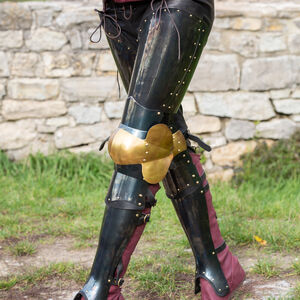
Leg Armor Harness “Evening Star”
Thigh to ankle full leg armour

Spring Steel Cuisse “Morning Star"
Thigh armor with brassed accents
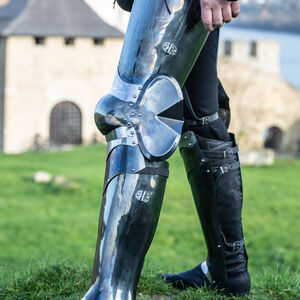
Armored Legs Cuisses “Dark Wolf”
Spring steel articulated thigh armor
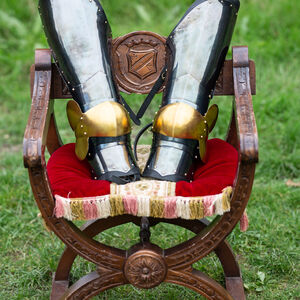
Cuisses “Evening Star”
Blackened spring steel thigh armor

Leg Cuisses “The Dark Star”
Blackened Spring Steel Thigh Armor
Medieval Gauntlets
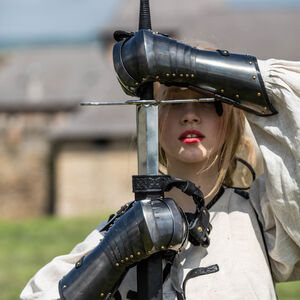
Blackened Gauntlets “Dark Star”
Spring Steel Knight Clamshell Gauntlets

Medieval Gauntlets Hourglass
Fighting finger gauntlets for SCA

Finger Gauntlets "The Kingmaker"
15th-century knight armour gauntlets
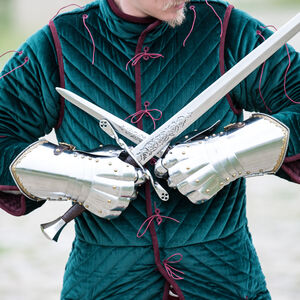
Finger Gauntlets “The Kingmaker”
15th century style articulated gauntlets
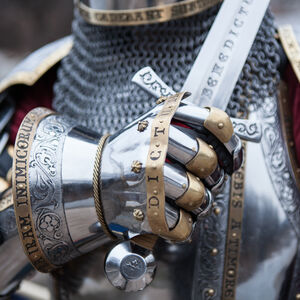
Gauntlets “The King's Guard”
Medieval hourglass finger gauntlets

Medieval Clamshell Armor Gauntlets
Updated lamellar gauntlets, Slavic style
Leather and metal armor bracers

Bracers “Gudrun the Wolfdottir”
Short Viking Bracers with Etched Brass
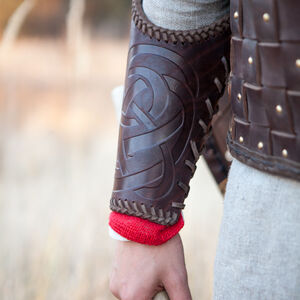
Viking's Leather Vambraces
Embossed leather lace up bracers
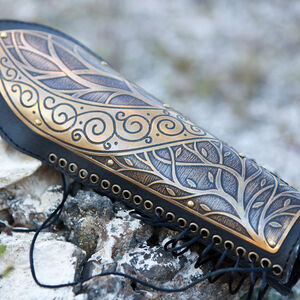
Archer Bracer “Knight of the West”
Longbow archer lightweight etched bracer

Medieval Long Bracers Bazuband
Boat-shaped forearm armour bracers
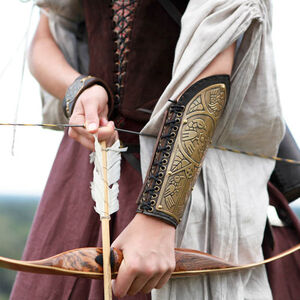
Bowman Bracer “Archeress”
Leather and brass handmade archer bracer
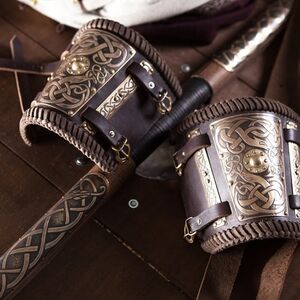
Viking Short Bracers
Leather viking bracers with etched brass
Greaves armor

Leg Armor Gothic Harness
XV century legs: cuisses and greaves
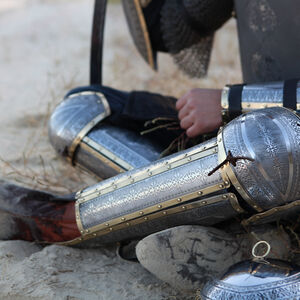
Leg Armor “Prince of the East”
Eastern greaves and knees, 16-17th cc.

Medieval Rus Leg Armour
Greaves with knee cops, 12-14th cc.
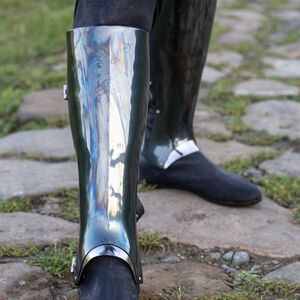
Greaves “Dark Wolf”
Spring steel shin protection
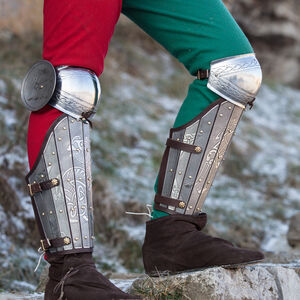
Medieval Splint Greaves with Knees
Splinted legs armor with Celtic etching
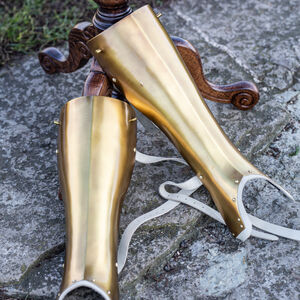
Brassed Greaves “Morning Star”
Tinted spring steel shin protection
Armor Gorgets

Gorget armor “Dark Wolf”
Blackened spring steel neck protection

Gorget Armor “Errant Squire”
Stainless steel armoured combat gorget

Gorget and Arms “Dark Star”
Fantasy Knight Gorget, Arms, Pauldrons

Gorget Armor “Morning Star”
Tinted steel armor neck protection

“Evening Star” Gorget
Blackened spring steel neck protection

Gorget “Morning Star”
Knight armour neck protection
Medieval Sabatons
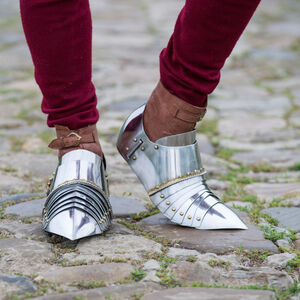
Sabatons “The Kingmaker”
Articulated stainless foot protection

Medieval Pointed Sabatons
Functional steel combat armor sabatons
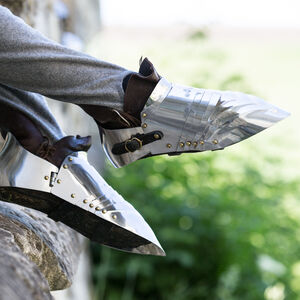
Gothic Knight Sabatons
Articulated XV century foot protection

Stainless Sabatons “Paladin”
Knight's armour sabatons, 15th c.

Medieval Blunt Toe Sabatons
Functional armor sabatons, 16th c.
Fantasy armor

Armour Set “Lady Warrior”
Fantasy leather and metal armor kit
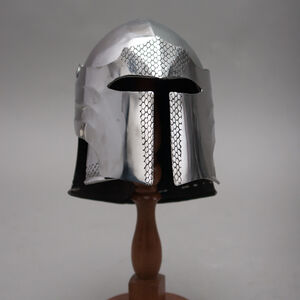
Barbuta Helmet “Lady Warrior”
Fantasy style stainless barbuta helmet
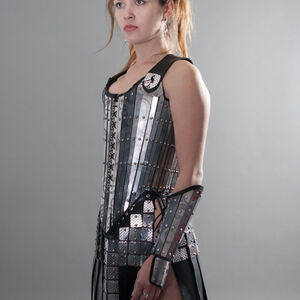
Steel Corset Armour “Lady Warrior”
Fantasy style women's armor corset

Fantasy Style Pauldrons
Leather and steel fighting spaulders

Fantasy Etched Arm Armor
Leather and stainless steel armor arms

Armor Set “Lady Warrior”
Fantasy etched pauldrons and gorget set
Medieval Gambesons

Short Gambeson "Layer One" for WMA
Sport edition cotton swordplay jacket

Long Gambeson "Layer One" SCA WMA
Linen under-armor padded jacket

Midi Gambeson "Layer One" for WMA
Sport edition linen swordsman's gambeson
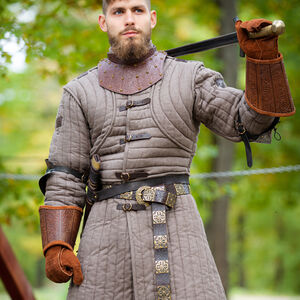
Midi Gambeson "Layer One" Heritage
Historical linen padded jacket for SCA

Fencing Jacket “One Standard” 350N
Mid-level protection HEMA jacket
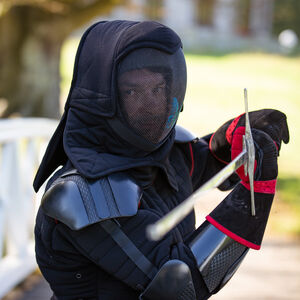
"One Standard" mask overlay
Fencing mask cover for HEMA
WMA plastic protection for SCA and HEMA

Sword-fighting gloves Black Knight
Plastic HEMA clamshell gauntlets

"Futura black" knee protection
Textured plastic knee cops for fencing
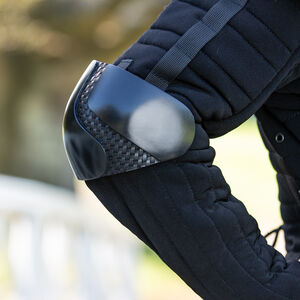
"Futura black" elbow protection
Textured plastic elbow cops for fencing

"Futura black" shoulder protection
Textured plastic pauldrons for fencing

“Edge” ridged knee protection
Plastic knee cops with ribs for fencing

“One Standard” elbow protection
Plastic elbow cops for fencing
Padded fencing gloves

Rapier gloves “Bird of Prey"
Fencing gloves with long embossed cuff
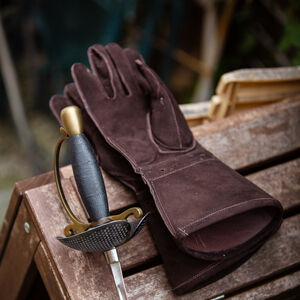
“Heritage” HEMA fencing gloves
Padded fencing gloves with midi cuff

“Heritage” HEMA fencing gloves
Padded fencing gloves with short cuff

“Heritage” HEMA fencing gloves
Padded fencing gloves with long cuff
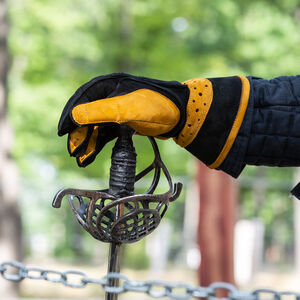
“Sport” HEMA fencing gloves
Padded leather gloves with short cuff

“Sport” HEMA fencing gloves
Padded fencing gloves with midi cuff
Knee and elbow cops for SCA, HEMA and armoured combat

Tinted spring steel couters
Combat elbow cops with round leaf
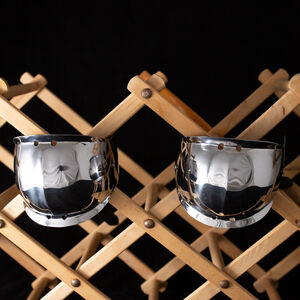
WMA swordplay hardened elbow cops
Lightweight elbow protection for fencing

Lightweight Elbow Cops for WMA
Spring steel elbow couters set

“Unicorn” Western Knees
Articulated knee cops with etching
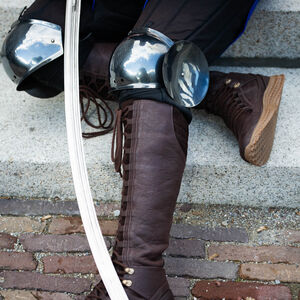
Tinted spring steel poleyns
Combat knee cops with round leaf
